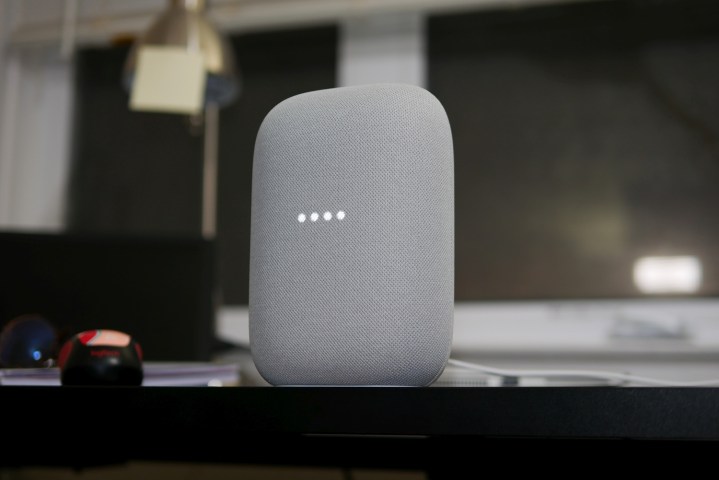If you’ve recently picked up a new Google Nest Audio speaker — or a couple to create a stereo pair — you’re probably enjoying the overall sound and convenience of voice-controlled music, podcasts, and audio. But you may not know you’ve got options when it comes to how your Nest Audio device sounds. You can easily add bass or treble to the music, as well as adjust some other settings to create a better overall user experience. You can check out our article on choosing a Google Home audio device or new Nest Audio if you need more guidance.
First things first: If you’re having any trouble accessing your device or its settings, a factory reset might be needed. Fortunately, a factory reset of Google Nest Audio is easy:
- Turn off the mic by flipping the switch on the back of the device.
- Press and hold the top center-front of the speaker for five seconds.
- Keep holding while it confirms the reset.
- Set up the device anew by following the instructions in the Google Home app.
You can adjust a number of settings on your Nest Audio speakers, including sound preferences, equalizer, and pairing or grouping speakers.
How to adjust equalizer settings on Nest Audio
Here’s how to adjust equalizer or EQ settings, which will let you add bass, level, or otherwise tweak your audio preferences:
- Go to the Google Home app.
- Choose your Nest Audio speaker.
- Look for the slider bars in the top-right corner and tap on them to view bass and treble.
- Use the slider bar and the More or Less selections to adjust the music to your taste.
How to create a stereo pair with Nest Audio
Want to use two Nest Audio speakers as a stereo pair? It’s quite simple to link them and set left and right channels. Here’s how to do it:
- Make sure that the smartphone you’re using to set up the speaker pair is connected to the same Wi-Fi network as the speakers.
- Click on the speaker you want as part of the stereo pair.
- Choose the Settings icon (the little gear).
- Under the Device Features subtitle, select Audio.
- Select Stereo Pair and follow the prompts, including choosing the other speaker you want in your pair.
The Google Home app will start playing a tone from one of the speakers to help you confirm which one is left and which one is the right side. Confirm that in the app, and then you’re done.
How to create a speaker group with Google or Nest speakers
While we’re on the subject of linking speakers, here’s how to create and group your Google Nest Audio or other Google speakers:
- Open the Google Home app, and tap on the Plus symbol in the top-left corner.
- Choose Create Speaker Group.
- Make your selections from the available speakers by clicking on them; then choose Next.
- Name the speaker group.
Now, when you call for music to be played on that group of multiple speakers, it will happen automatically.
How to unpair Nest Audio
If you no longer want to use your speakers as a stereo pair, you can unpair them. Tap the speaker pair, and in the top-right corner, tap Settings> Speaker Pair >Separate Speaker Pair.
Adjust alarm and timer volumes
If you frequently use your Google Nest Audio speaker as a timer or an alarm, you can adjust the overall level of those tones.
Click on your speaker in the Google Home app, then go to Settings > Audio > Alarm &Timers. Use the slider bar to change the default volume.
Lower the listening volume when talking to Google
Another handy sound setting is the ability to have Google lower the listening volume when you’re speaking to your assistant. It keeps you from feeling like you need to shout and also helps the Assistant hear you better.
Click on your speaker in the Google Home app, then go to Settings > Audio > Lower Volume When Listening.
Making adjustments to your Google Audio device is easy and lets you create a customized experience based on how you use the device and your musical or listening preferences.




